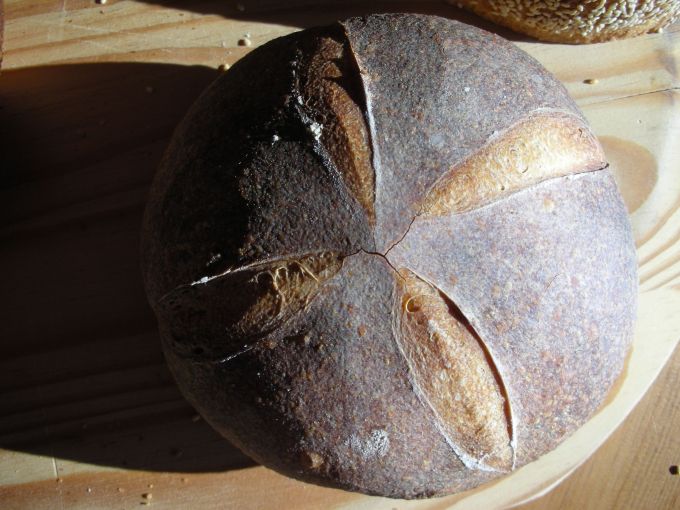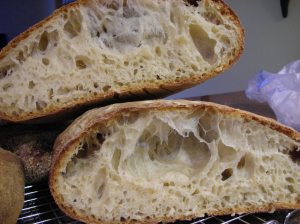Bread making is magic. Four principal ingredients: flour, water, salt, and yeast, they bind to each other to become a different life form, Given time, they grow, they expand with a surface tension like a drum. Peaking into it, one sees a million tiny bubbles, seemingly making chatters. The bond grow stronger and at the peak of their journey, they walk into the infernal flame together, stoically. “Fear not. We will be reborn”.
Like a phoenix, out emerges this golden loaf of what we call ‘Bread’. Bread is life, metaphorically and literally.
That’s nice and romantic.
In reality, the process is mise en place, mixing, primary fermentation, punching down, dividing, rounding, benching, shaping/panning, proofing, baking and an important last step, cooling. In each of the steps, there’s tremendous amount of knowledge and attention must be paid. The goal is to coerce every bit of flavor out of the 4 ingredients that the bread starts out with. It can be a most satisfying and spiritual experience when you get it right. Disappointing when you don’t.
But no matter what, it is always humbling.
There are many styles of breads. Not one is better just different. I found that bread made with commercial yeast has very one-dimensional taste. My kind involves only sourdough starter or levain. It has a blistering crust of a texture like leather and the taste burnt sugar. The crumb is silky and lacy. The texture is firm and toothy. The flavor bold and complex. Try Tartine’s country loaf and you will know what I mean.
But that’s the problem. Tartine is one hour of driving IF there’s no traffic, just to get there. And it only comes out of the oven at 5pm (major rush hour.) The snake of a line starts coming out of the door by 4:45.
Before Hayden was born, I tried to make my own, and have had some success. To make one loaf takes planning and LOTS of refrigerator space (to slow down the fermentation.) Ain’t got that kind of leisure anymore.
Acme bread, though based in Berkeley, is widely available in the south bay. In general, I found the ones I’ve tried in restaurants are outstanding, but the ones from grocery outlets or farmer’s markets, are sometimes, inconsistent. A couple of months ago, expecting little from it, I picked up their levain again at Sunnyvale’s Farmer’s Market.
In this side-by-side taste comparison, Acme doesn’t look as ‘pretty‘, but I would say the taste is every bit as complex. Actually this particular loaf of Tartine may be over-proofed so a hint of sourness develops which I despise in breads. But I know that’s not normal for Tartine.




One Trackback/Pingback
[…] without a side-by-side taste comparison like I did in Bread: A Love Letter for Tartine and Acme, my very biased opinion is … No, it’s not […]